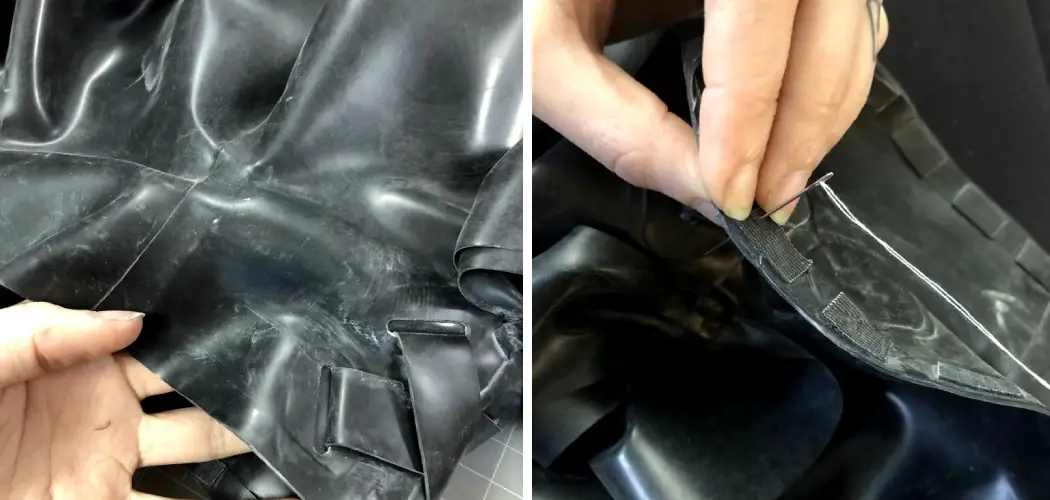Sewing with latex can seem intimidating, but it doesn’t need to be. With a few tips and tricks, you can tackle this material like a pro. Latex has been a popular fabric in the fashion industry for decades due to its unique properties.
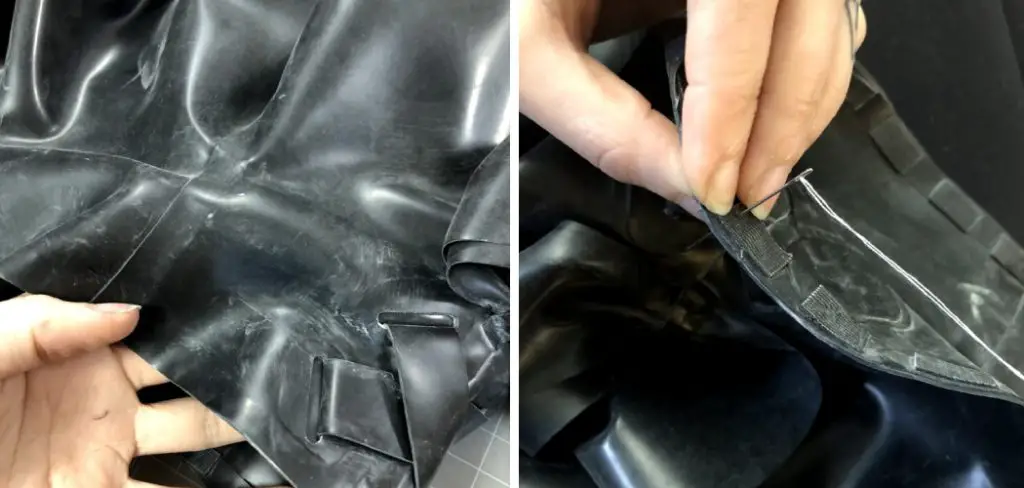
It’s stretchy shiny, and can create a flattering fit. But, working with this material can be tricky if you’re not familiar with it. In this post, we will discuss everything you need to know about how to sew latex, from choosing the right materials to finishing your project.
Can You Sew Latex?
Sewing is a skill that takes time and practice to master, but have you ever wondered if you can sew latex? The answer is yes, you can definitely sew latex, but it requires some specialized knowledge and techniques. Firstly, latex is a non-porous, stretchy material, which makes it different from other fabrics.
As a result, you need to choose the right kind of needle and thread for sewing latex, as well as use a sewing machine specifically designed for stretch materials. Additionally, because latex is prone to tearing, you need to be careful when cutting and sewing it and always use sharp scissors or a rotary cutter.
In conclusion, with the right tools and skills, you can sew beautiful and stylish garments or accessories with latex.
Why Should You Sew Latex?
Sewing with latex may seem daunting, but the results are worth the effort. Not only does latex add an edgy and unique touch to any garment or accessory, but it also provides durability and comfort. Clothing made of latex tends to last longer than traditional fabrics due to its stretchy and sturdy nature.
Additionally, wearing latex can enhance your confidence and make you feel empowered in a variety of situations. Whether you want to add a bold statement piece to your wardrobe or simply enjoy the material’s versatility, sewing with latex is a skill every fashion enthusiast should try at least once.
How to Sew Latex: A Beginner’s Guide
1. Start with The Right Materials
When it comes to sewing with latex, you need to choose the right materials. Opt for a latex sheet, also known as a rubber sheet. Be sure to get a high-quality sheet that’s designed for clothing or accessories rather than a thicker industrial sheet.
You’ll also need sharp scissors or a rotary cutter and a high-quality needle specially designed for working with thicker materials. You can also invest in a walking foot sewing machine to help you through the process.
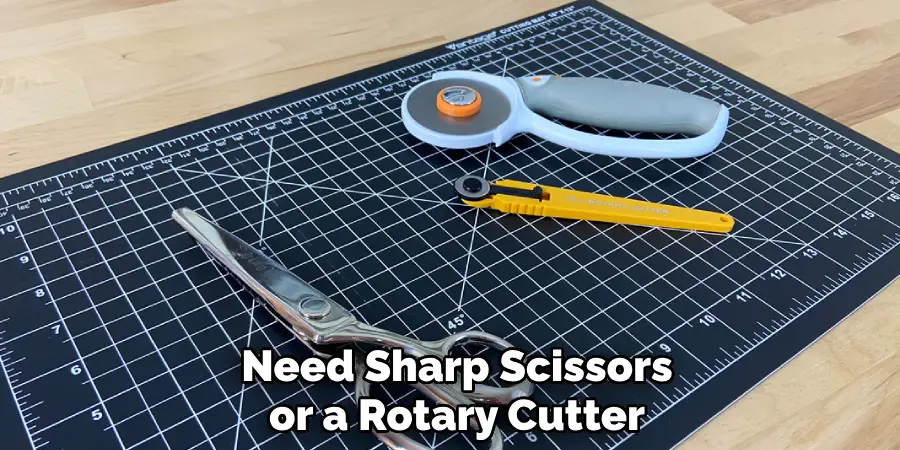
2. Prepare Your Workspace
Sewing with latex can be messy, so it’s essential to clean your workspace beforehand. Make sure to keep your area free of any flammable items and work in a well-ventilated room. Consider laying down a plastic sheet under your work area to protect your floors.
3. Take Proper Measurements
Before you start sewing, make sure to take accurate measurements of your body or the person you’re sewing for. Latex fabric stretches, so it’s important to take measurements when stretched to get the right fit. Remember that this fabric is unforgiving, so every mistake will be visible, so it’s crucial to take your time.
4. Use the Right Stitch
When it comes to sewing with latex, you’ll need to use a specific stitch known as a zigzag stitch or a triple stretch stitch for the best results. These stitches won’t cause the fabric to pucker or ripple. Be sure to test your stitching on a scrap piece of fabric before starting on your main project.
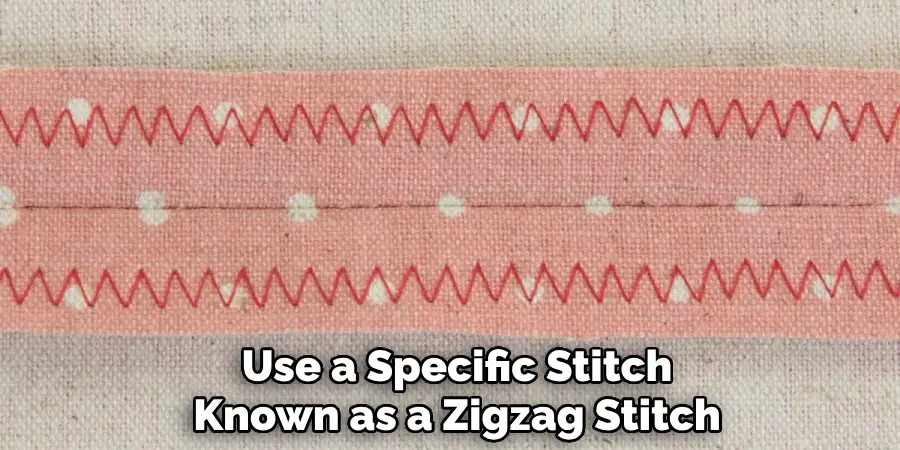
5. Use the Right Thread
It’s essential to use the right thread when sewing with latex. We recommend using a strong polyester thread designed for stretch fabrics. This type of thread will hold up better and won’t easily break or snap while working with thicker materials like latex.
6. Avoid Using Pins
Pins can leave permanent holes in your latex fabric, so we recommend using clips or paper clips instead. These will hold your fabric together without leaving any visible marks. Alternatively, you can also use a washable glue stick to temporarily hold pieces of fabric in place.
7. Don’t Rush
Sewing with latex takes time and patience, so do not rush the process. Take your time to ensure that your stitches are straight and even and that the fabric is smooth and free of any puckering. Remember, making mistakes can be costly with this fabric, so it’s important to take your time and get it right on the first try.
With these tips in mind, you’ll be well on your way to sewing beautiful and durable pieces with latex fabric. Always start with the right materials, prepare your workspace, take proper measurements, use the correct stitch and thread, avoid using pins, and, most importantly, be patient.
5 Considerations Things When You Need to Sew Latex
1. Needle Type
When you need to sew latex, it is important to select the right type of needle for the job. The best needles for sewing latex are either a size 80/12 or 90/14 universal needle. These needles are designed to penetrate the material without causing any damage or tearing. It is also important to use a new needle each time you sew with latex, as an old or dull needle can cause damage to the fabric.

2. Thread Type
The type of thread you use when sewing with latex is also very important. You should use a strong polyester thread designed specifically for working with rubber and synthetic materials such as latex. This type of thread will withstand the stretching and stress of working with this material without breaking or snapping.
3. Stitch Length
When sewing with latex, it is important to use a short stitch length to ensure that your seams remain secure and durable. A stitch length of 2-3 mm is ideal for most projects, but you may need to adjust this depending on the thickness of your fabric and how much stretch it has.
4. Pattern Markings
When working with patterns and cutting out pieces from your fabric, it is important to ensure all pattern markings are visible on both sides of the material before beginning your project. This will help ensure that all pieces fit together correctly and that there are no gaps between them when sewn together.
The best way to do this is by using a tailor’s chalk or a disappearing ink marker that will not leave any residue on the fabric after it has been washed or dried.
5. Presser Foot
The presser foot of your sewing machine can also impact how well your project turns out when working with latex fabrics. To ensure that your stitches remain even and secure, it is best to use a walking foot attachment, which helps keep the fabric layers from shifting while being stitched together.
Additionally, if your stitches are not forming properly, try changing the pressure setting on your presser foot, as this can help create more even results.
5 Benefits of Sew Latex
1. Durability
Sew Latex is a type of fabric that is made from a combination of natural latex and synthetic fibers. This makes it incredibly durable and resistant to wear and tear, making it an ideal choice for clothing that needs to last for a long time. It is also highly resistant to fading, so your garments will look new for much longer than with other fabrics.
2. Breathability
Sew Latex is also highly breathable, which makes it perfect for clothing that needs to be comfortable in hot weather. The fabric circulates air, keeping you cool and comfortable even when the temperature rises. It also wicks away moisture quickly, helping you stay dry and comfortable throughout the day.
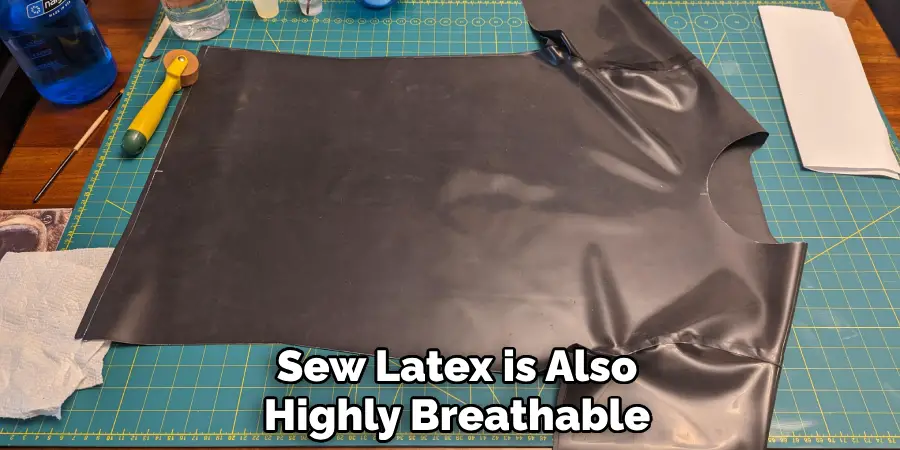
3. Hypoallergenic
Sew Latex is hypoallergenic, which means that it won’t irritate sensitive skin or cause allergic reactions in people who are prone to it. This makes it an excellent choice for people who have allergies or sensitive skin, as they can wear Sew Latex without worrying about any adverse reactions.
4. Easy Care
Sew Latex is also very easy to care for, as it doesn’t require special detergents or treatments like some other fabrics do. You can simply machine wash and tumble dry your Sew Latex garments without any problems, making them much easier to maintain than other fabrics.
5. Eco-Friendly
Finally, Sew Latex is an eco-friendly fabric choice as it doesn’t require harsh chemicals during its production process like some other fabrics do. This means you can feel good about wearing Sew Latex, knowing that you are helping the environment by choosing a more sustainable option!
6 Common Mistakes People Make When Trying to Sew Latex
1. Not Using the Right Needle
One of the most common mistakes people make when trying to sew latex is not using the right needle. Latex is a delicate material that requires a special needle to ensure that it does not tear or become damaged while sewing.
If you are using a regular sewing needle, it can cause holes or tears in the fabric as it is too thick and can easily puncture the latex. It’s important to use a special latex needle when sewing with this material.
2. Not Pre-Stretching
Another mistake people make when trying to sew latex is not pre-stretching the material before beginning their project. Latex has an elastic quality to it, which means that it will stretch over time, so pre-stretching it before you begin your project will help ensure that your seams stay intact and your finished product looks great.
3. Not Using Teflon Foot
When sewing with latex, many people forget to use a Teflon foot on their machine. A Teflon foot helps reduce friction between the fabric and the feed dogs on your machine, which prevents slipping and ensures that your stitches look even and professional. Without this foot, you may find that your stitches are uneven or have skipped sections due to slippage of the fabric while being sewn.
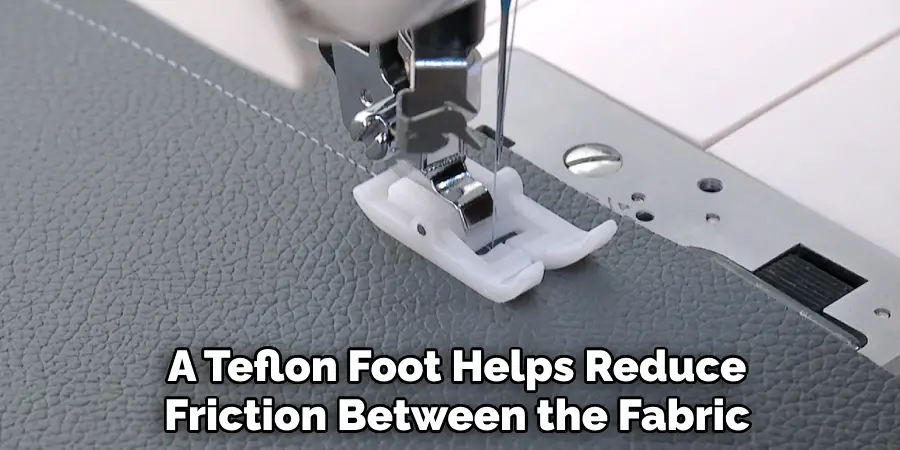
4. Not Using Waxed Thread
Another mistake people often make when trying to sew latex is not using waxed thread for their seams. Waxed thread helps keep moisture out of the seam by providing an extra layer of protection against water damage, ensuring that your seams stay strong for years to come! This type of thread can be found in most craft stores or online retailers specializing in sewing supplies.
5. Not Adjusting Stitch Length
When working with latex, many people forget to adjust their stitch length accordingly depending on what they’re doing with the fabric. For instance, if you are sewing two pieces together, then you should use a longer stitch length than if you were just top stitching around an edge or hemming something up quickly; this will help ensure that your seams are strong enough for whatever project you’re working on!
6. Skipping Pinning Step
Finally, one of the biggest mistakes people make when working with latex is skipping the pinning step altogether! Pins are essential for helping keep everything in place while you’re sewing; without them, things can move around while being stitched together and create uneven seams or gaps in between pieces of fabric where there shouldn’t be any! So don’t forget this important step – always pin first before starting any project!

Conclusion
Sewing with latex can take some practice, but with the right materials, workspace, and techniques, you can create beautiful garments and accessories. Remember to take your time, be patient, and enjoy the process. With enough practice, you’ll be able to create some stunning pieces that showcase the best qualities of this unique fabric. Thanks for reading our post about how to sew latex.

